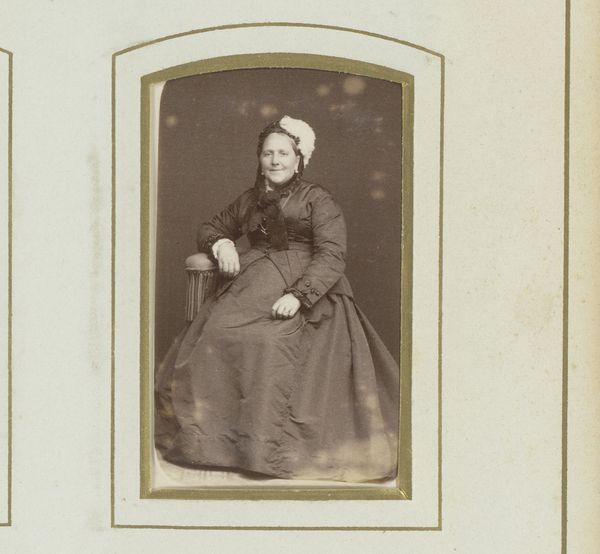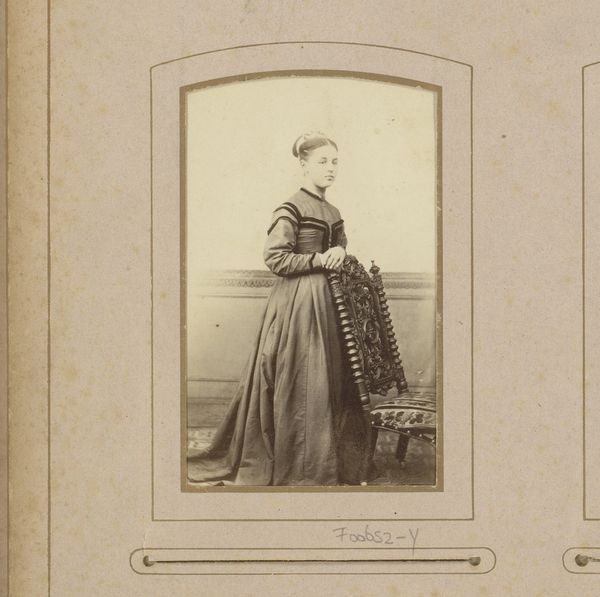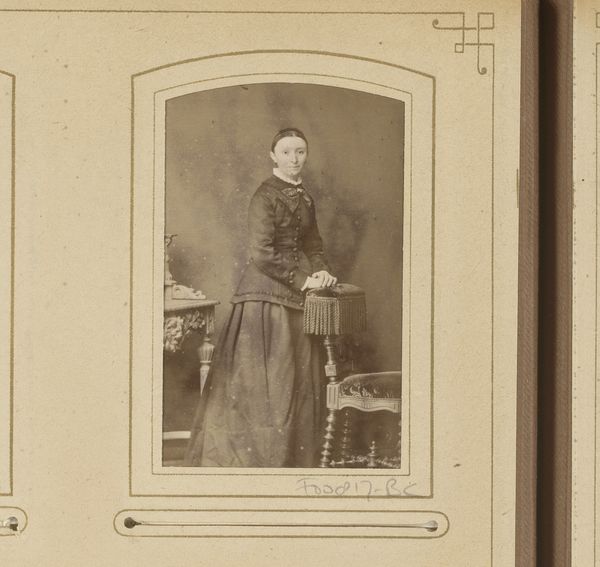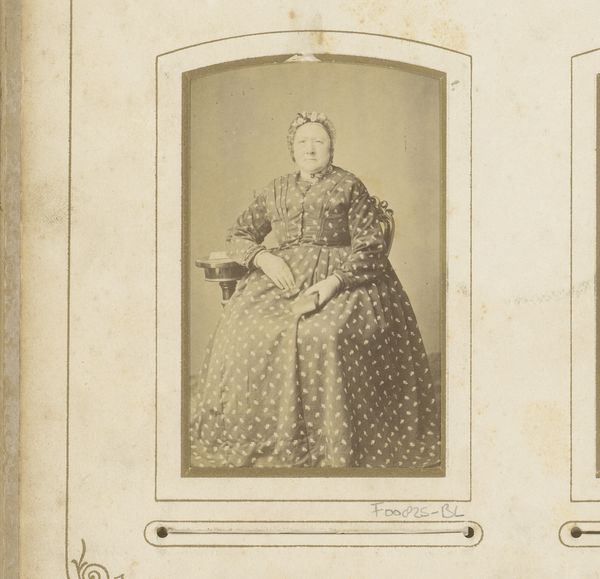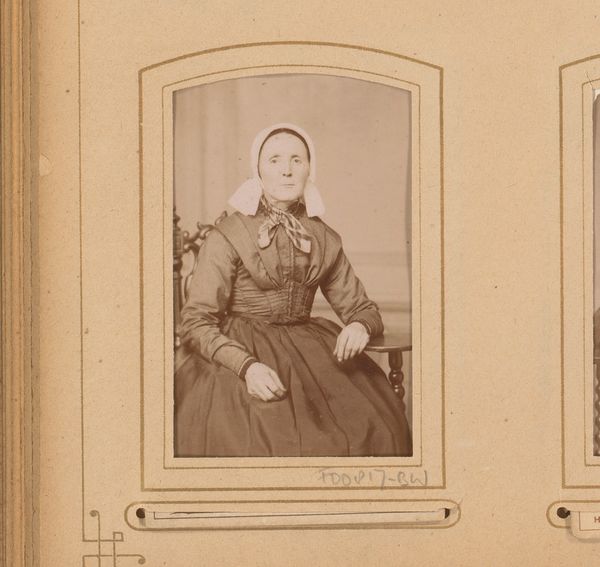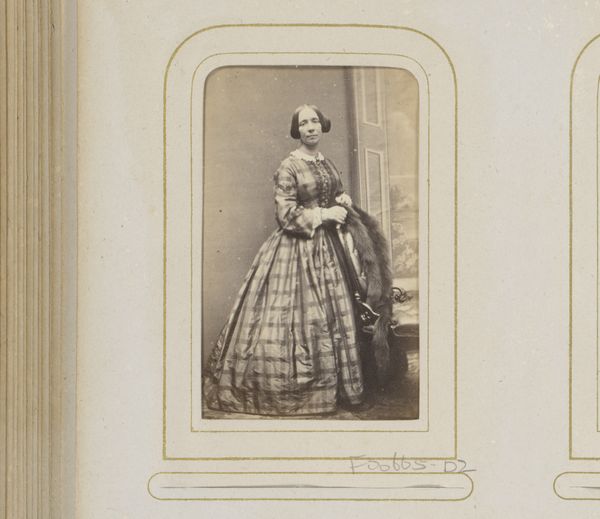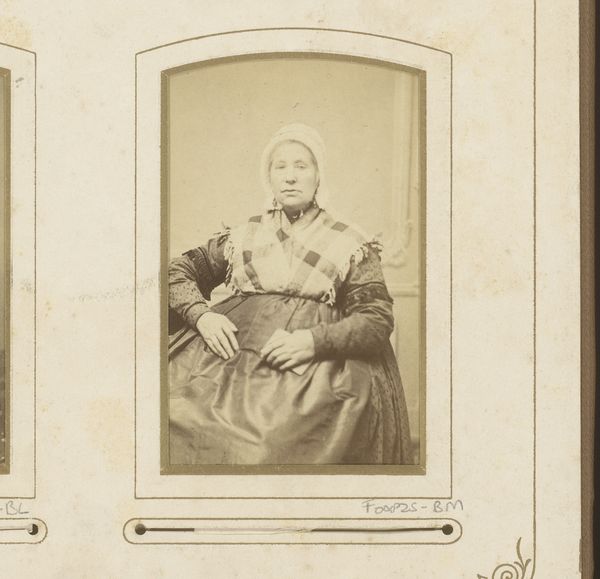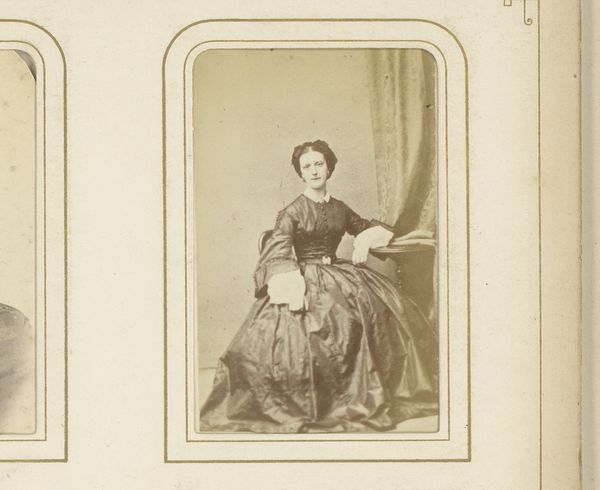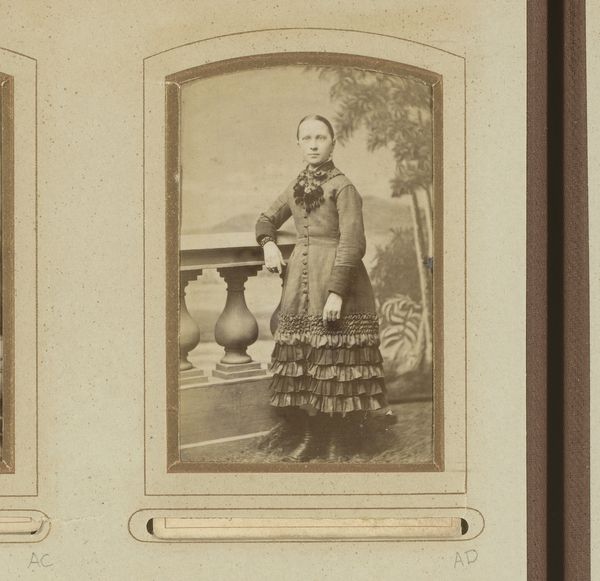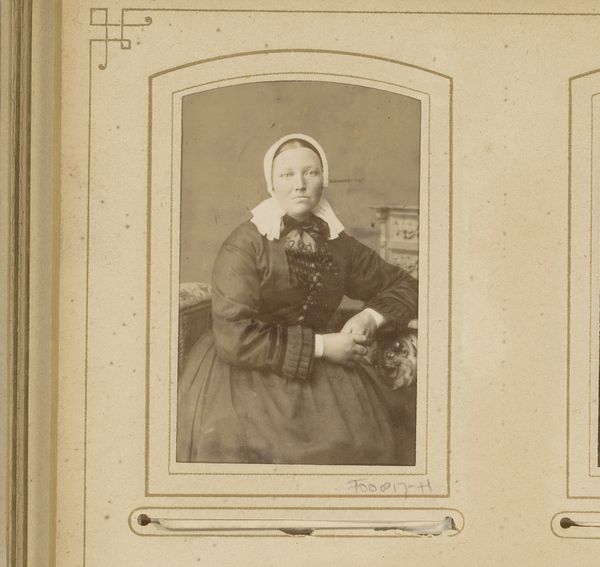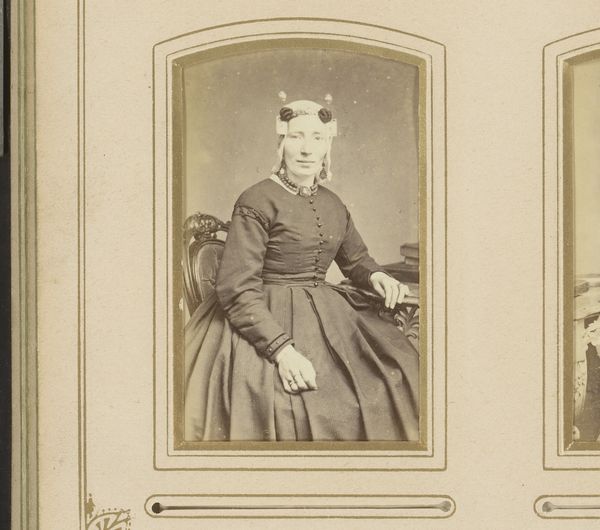
photography
#
portrait
#
photography
#
historical photography
#
genre-painting
Dimensions: height 100 mm, width 62 mm
Copyright: Rijks Museum: Open Domain
Editor: Let's delve into "Portret van een zittende vrouw met muts," a photograph by Carl Philip Wollrabe, created between 1864 and 1871. It’s striking how posed and formal it is; I feel like I'm seeing a specific historical moment captured. What historical and social context informs our understanding of this piece? Curator: This photograph offers a glimpse into the rise of photography as a tool for documenting social identity. The formal pose, the woman's attire, even the backdrop—all were carefully constructed to project a particular image, particularly within the burgeoning middle class. This piece exists at the intersection of personal identity and societal expectations of womanhood, so what do you observe about the woman's own projected status or desires through this piece? Editor: It looks very much like a typical portrait of someone from the 19th century - there is little or no expressiveness on their face. Could she, in some way, subvert the intended reading? Or are we perhaps overinterpreting the photo and ignoring a deeper cultural meaning? Curator: Absolutely, portraits such as this served as important social currency; as photography became increasingly accessible, it democratized the practice of portraiture, allowing wider audiences to participate in its cultural function. That considered, don't you think there might be some underlying currents challenging dominant notions of class and status through photographic images? Think of how they were shared and consumed! Editor: That's a fascinating point. I hadn't thought about how portraiture enabled expressions of class identity that extended beyond the elites. Now it's easier to think about this photograph as a powerful symbol of social mobility through visual culture. Curator: Exactly. This is more than just a pretty photograph - it's about understanding the cultural aspirations embedded in imagery.
Comments
No comments
Be the first to comment and join the conversation on the ultimate creative platform.
